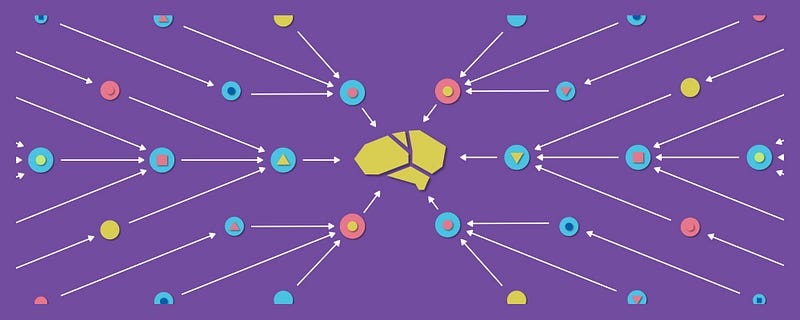
MMS • RSS
Article originally posted on Data Science Central. Visit Data Science Central
In last part we have seen the basics of Artificial intelligence and Artificial Neural Networks. As mentioned in the last part this part will be focused on applications of Artificial neural networks. ANN is very vast concept and we can find its applications anywhere. I have mentioned some of the major use cases here.

(Source: itnext)
Applications of ANN’s
Widrow, Rumelhart and Lehr [1993] argue that most ANN applications fall into the following three categories:
- Pattern classification,
- Prediction and financial analysis, and
- Control and Optimization.
In practice, their categorization is ambiguous since many financial and predictive applications involve pattern classification. A preferred classification that separates applications by method is the following:
- Classification
- Time Series and
- Optimization.
Classification problems involve either binary decisions or multiple-class identification in which observations are separated into categories according to specified Characteristics. They typically use cross sectional data. Solving these problems entails ‘learning’ patterns in a data set and constructing a model that can recognize these patterns. Commercial artificial neural network applications of this nature include:
- Credit card fraud detection reportedly being used by Eurocard Nederland, Mellon Bank, First USA Bank, etc. [Bylinsky 1993];
- Optical character recognition (OCR) utilized by fax software such as Calera Recognition System Fax Grabber and Caere Corporation’s Anyfax OCR engine that is licensed to other products such as the popular WinFax Pro and FaxMaster[Widrow et al.1993];
- Cursive handwriting recognition being used by Lexicus 2 Corporation’s Longhand program that runs on existing notepads such as NEC Versapad, Toshiba Dynapad etc. [Bylinsky 1993], and ;
- Cervical (Papanicolaou or ‘Pap’) smear screening system called Papnet 3 was developed by Neuromedical Systems Inc. and is currently being used by the US Food and Drug Administration to help cytotechnologists spot cancerous cells [Schwartz 1995, Dybowski et al.1995, Mango 1994, Boon and Kok 1995, Boon and Kok 1993, Rosenthal et al.1993];
- Petroleum exploration being used by Texaco and Arco to determine locations of underground oil and gas deposits [Widrow et al.1993]; and
- Detection of bombs in suitcases using a neural network approach called Thermal Neutron Analysis (TNA), or more commonly, SNOOPE, developed by Science Applications International Corporation (SAIC) [Nelson and Illingworth 1991, Johnson 1989, Doherty 1989 and Schwartz 1989].
In time-series problems, the ANN is required to build a forecasting model from the historical data set to predict future data points. Consequently, they require relatively sophisticated ANN techniques since the sequence of the input data in this type of problem is important in determining the relationship of one pattern of data to the next. This is known as the temporal effect, and more advance techniques such as finite impulse response (FIR) types of ANN and recurrent ANNs are being developed and explored to deal specifically with this type of problem.
Real world examples of time series problems using ANNs include:
- Foreign exchange trading systems: Citibank London [Penrose 1993, Economist 1992, Colin 1991, Colin 1992], Hong Kong Bank of Australia [Blue 1993];
- Portfolio selection and management: LBS Capital Management 4 (US$300m) [Bylinsky 1993] (US$600m) [Elgin 1994], Deere & Co. pension fund (US$100m) [Bylinsky 1993] (US$150m) [Elgin 1994], and Fidelity Disciplined Equity Fund [McGugan 1994];
- Forecasting weather patterns [Takita 1995];
- Speech recognition network being marketed by Asahi Chemical [Nelson and Illingworth 1991];
- Predicting/confirming myocardial infarction, a heart attack, from the output waves of an electrocardiogram (ECG) [Baxt 1995, Edenbrandt et al.1993, Hu et al.1993, Bortolan and Willems 1993, Devine et al., Baxt and Skora 1996]. Baxt and Skora reported in their study that the physicians had a diagnostic sensitivity and specificity for myocardial infarction of 73.3 and 81.1% respectively, while the artificial neural network had a diagnostic sensitivity and specificity of 96.0% and 96.0% respectively; and
- Identifying dementia from analysis of electrode-electroencephalogram (EEG) patterns [Baxt 1995, Kloppel 1994, Anderer et al.1994, Jando et al.1993, Bankman et al.1992]. Anderer et al. reported that the artificial neural network did better than both Z statistic and discriminant analysis [Baxt 1995].
Optimization problems involve finding solution for a set of very difficult problems known as Non-Polynomial (NP)-complete problems, Examples of problems of this type include the traveling salesman problem, job-scheduling in manufacturing and efficient routing problems involving vehicles or telecommunication. The ANNs used to solve such problems are conceptually different from the previous two categories (classification and time-series), in that they require unsupervised networks, whereby the ANN is not provided with any prior solutions and thus has to ‘learn’ by itself without the benefit of known patterns. Statistical methods that are equivalent to these type of ANNs fall into the clustering algorithms category.
Conclusion:
This were some of the use case of Artificial Neural Networks. In next part we will see biological background and history of development of Artificial neural networks.